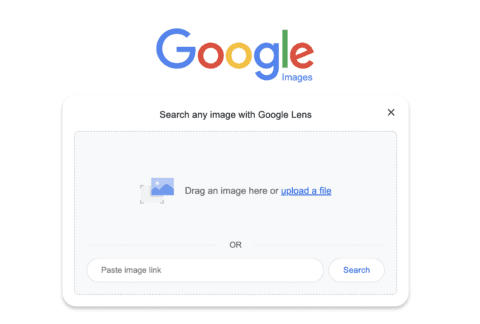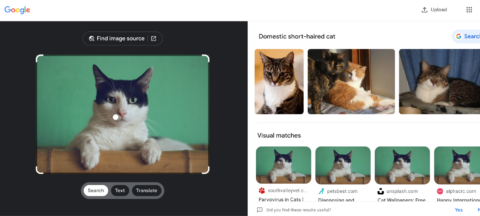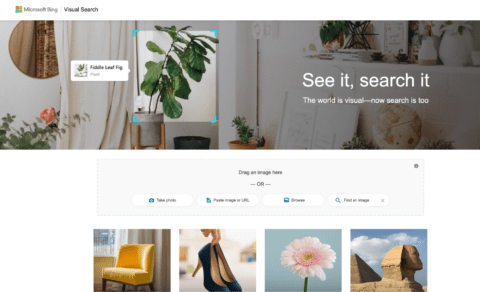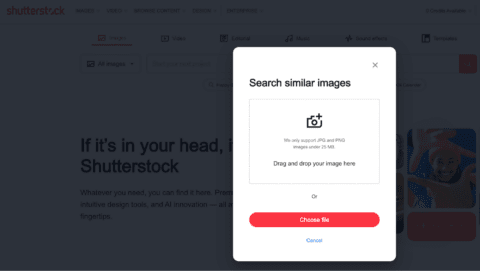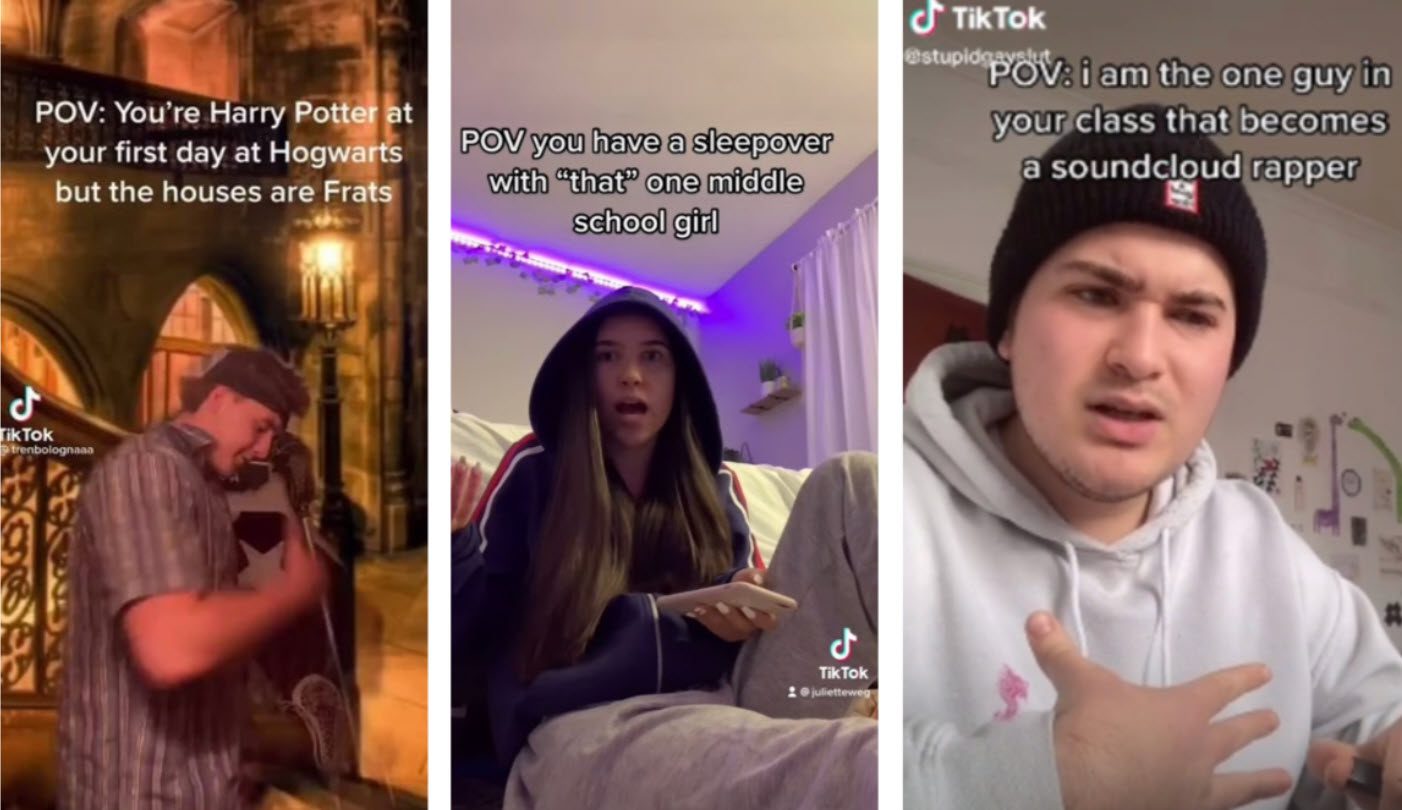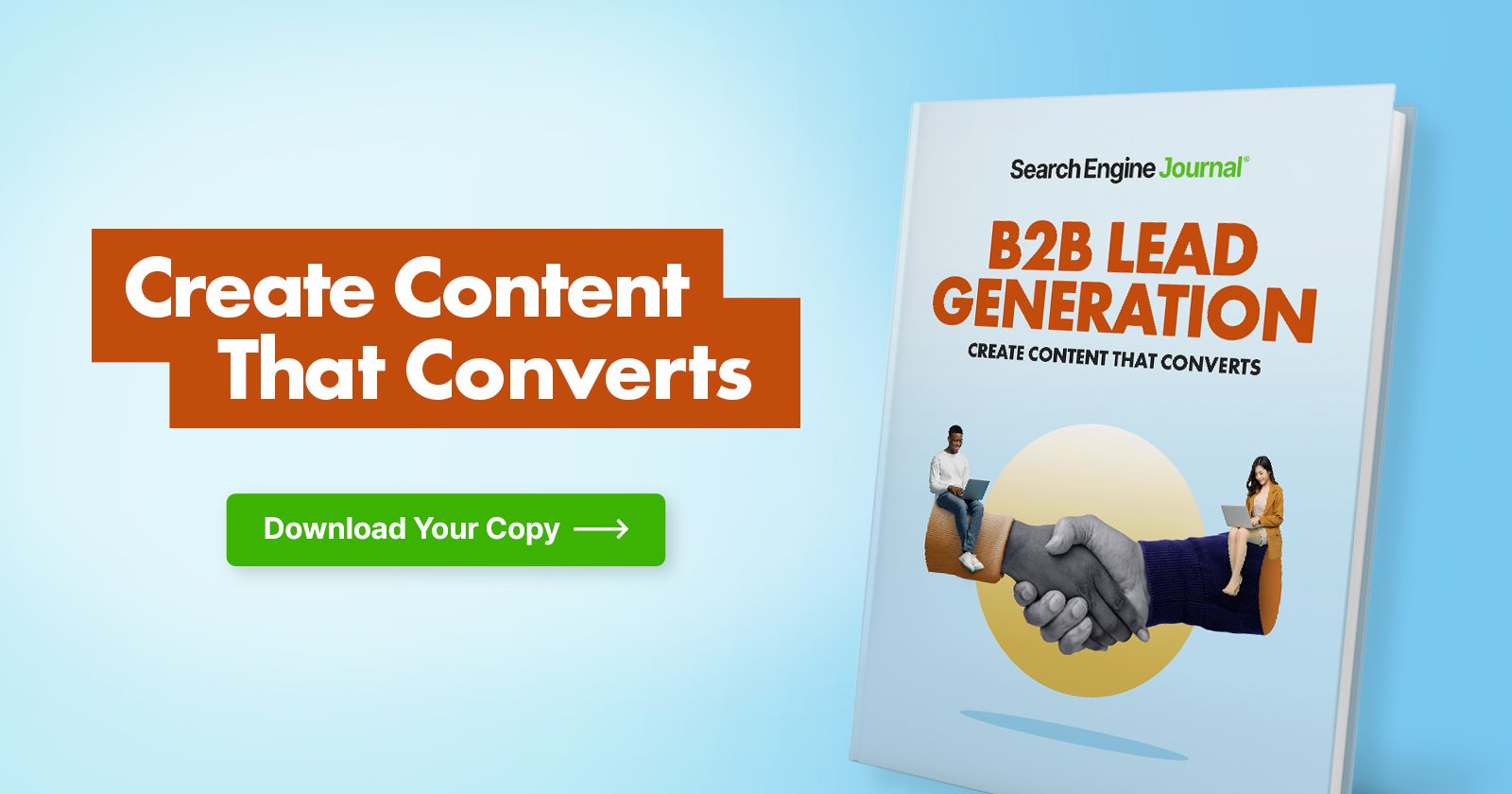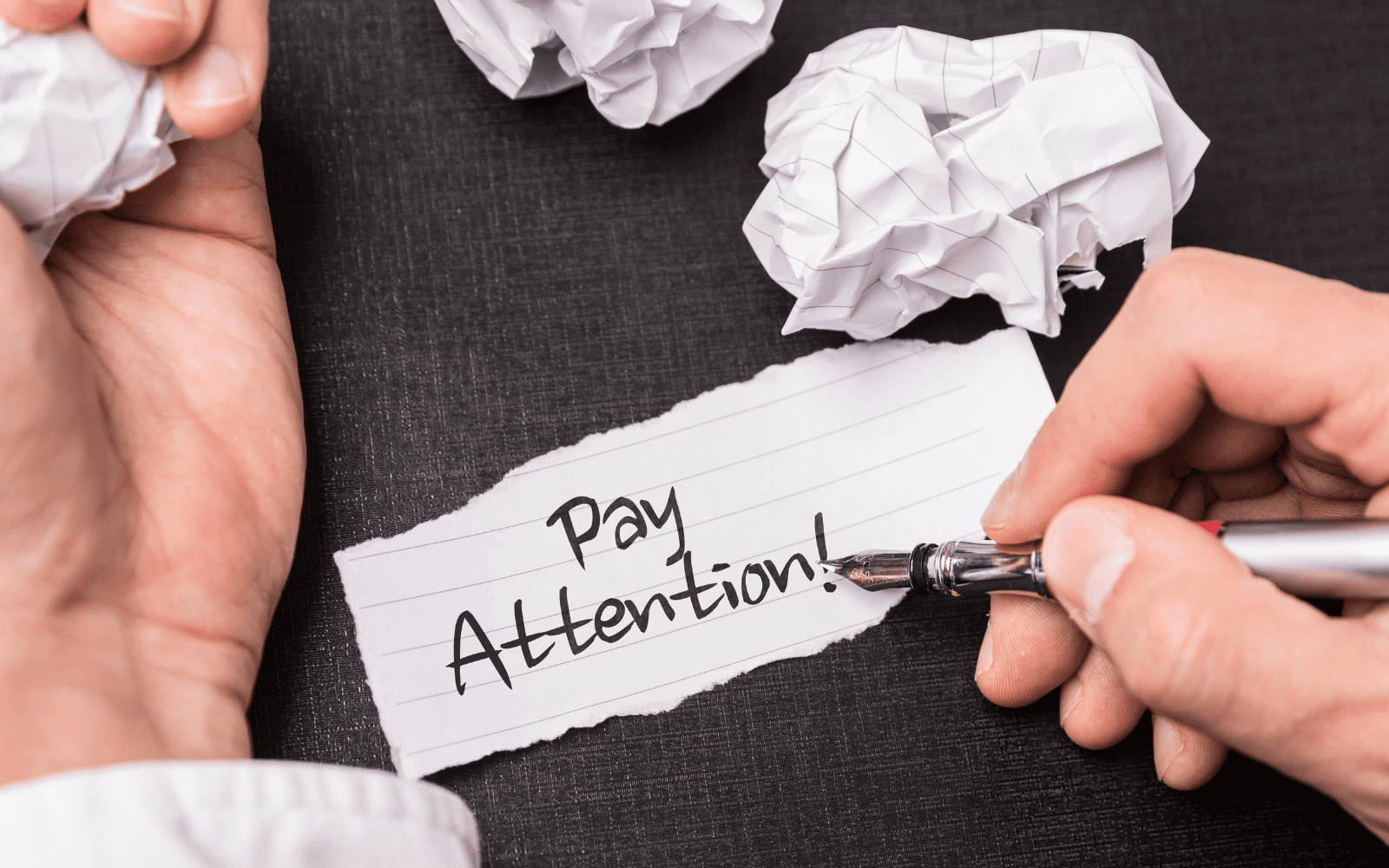Marketing Calendar 2024 With Template To Plan Your Content via @sejournal, @theshelleywalsh
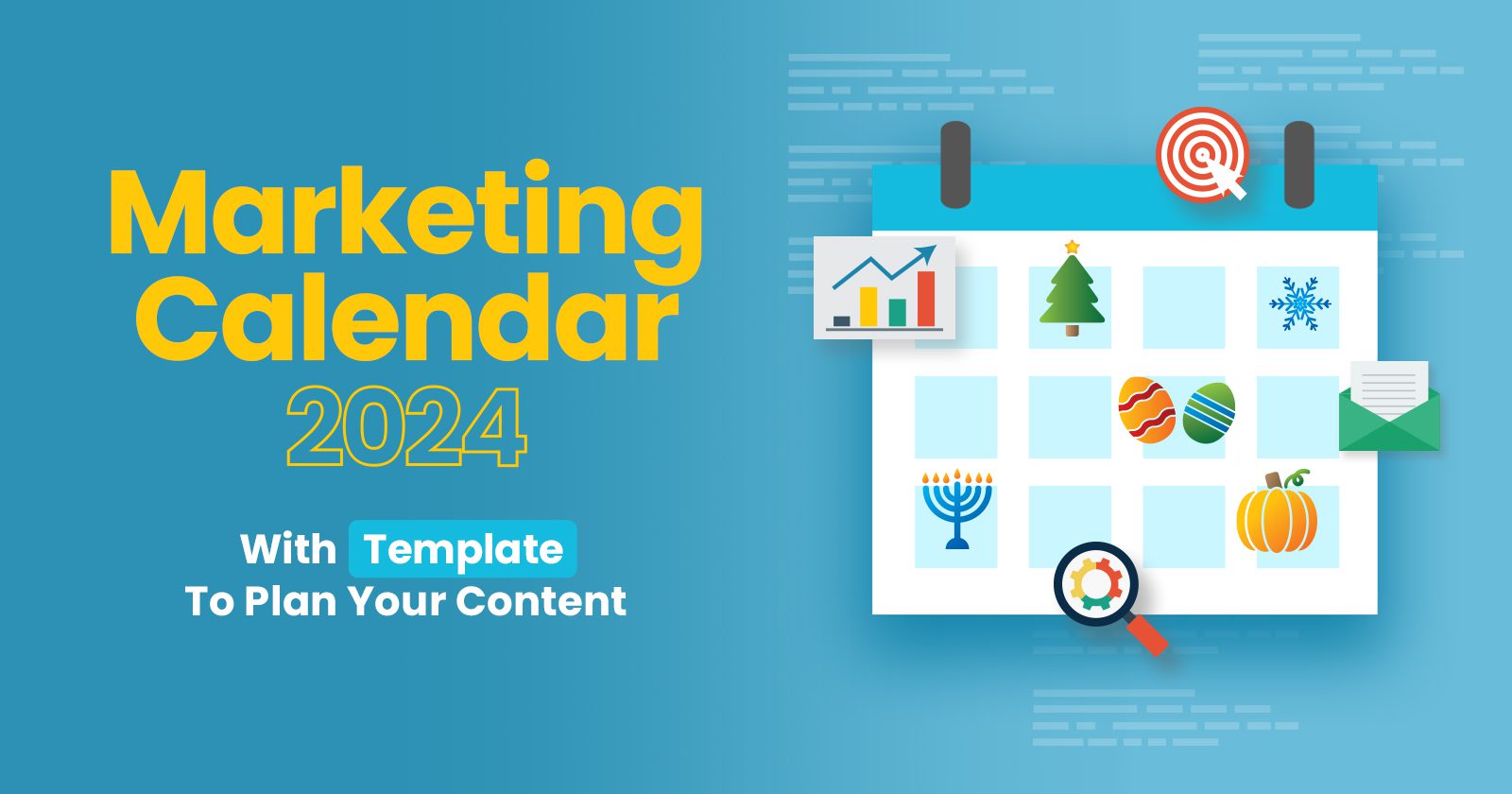
Setting yourself and your organization up for successful marketing means understanding the interesting dates, holidays, and events throughout the year that you can leverage for your brand.
Pulling that information together takes time and effort, so we’ve done the legwork for you.
Our complete marketing calendar for 2024 with a template gives you all the information you need to plan your content.
You can customize this easily referenceable table and pull out the relevant dates for your business to create your own 2024 marketing calendar.
For planning content and social media campaigns, using a marketing calendar gives you insights and opportunities to tie your content into well-known events in engaging ways.
These range from big sporting events to awareness months that you can plan content around, to public holidays so you can leverage them for engagement.
Free Marketing Calendar And Template For 2024
Below, we have listed some of the major holiday highlights for 2024. We have also compiled a free spreadsheet that lists many obscure awareness days to help you plan content in any niche.
The full 2024 marketing calendar and template are available at the end of the article, with a breakdown of each month.
This calendar focuses mainly on the U.S. and Canada, with some major international and religious holidays included.
Your 2024 Holiday Marketing Calendar
January
January is a time of resolutions and fresh starts, with many picking a goal for the year or looking to make a change.
It can be a slow start, given that many people are still recovering from the end of last year, but that gives you time to plan your calendar and ease into a new year of content.
There are plenty of broad activities to lean into, like Veganuary and National Hobby Month, to connect with audience lifestyles.
Events in January always have all eyes on them, too, like the Golden Globes and Winter X Games, so content around them can kickstart your 2024 engagement.
Monthly Observances
- International Creativity Month
- National Blood Donor Month
- National Braille Literacy Month
- National Hobby Month
- Dry January
- Veganuary
Weekly Observances
- January 1-7 – New Year’s Resolutions Week
- January 1-7 – Celebration of Life Week
- January 1-7 – Diet Resolution Week
- January 8-14 – Home Office and Security Week
Days
- January 1 – New Year’s Day
- January 1 – Mexican Independence Day
- January 1 – Global Family Day
- January 2 – National Science Fiction Day
- January 4 – World Braille Day
- January 6 – Epiphany
- January 7 – Orthodox Christmas
- January 10 – Golden Globes
- January 13 – Korean American Day
- January 13 – Stephen Foster Memorial Day
- January 14 – Orthodox New Year
- January 14 – Ratification Day
- January 15 – Martin Luther King Jr. Day
- January 15 – Civil Rights Day
- January 17 – Ditch New Year’s Resolutions Day
- January 17 – Benjamin Franklin Day
- January 18-28 – Sundance Film Festival
- January 20 – World Religion Day
- January 24 – Tu BiShvat
- January 26-29 – Winter X Games
- January 27 – International Holocaust Remembrance Day
- January 28 – Data Privacy Day
Popular Hashtags for January:
- #NewYearsDay
- #ScienceFictionDay
- #NationalTriviaDay
- #NationalBirdDay
- #NationalStickerDay
- #GetToKnowYourCustomersDay
- #CheeseLoversDay
- #MLKDay
- #NationalHuggingDay
- #PieDay
- #NationalComplimentDay
- #PrivacyAware
February
Despite being the shortest month, February is full of interesting events you can leverage for your marketing campaigns.
The colder days can leave people looking for things to get involved with from the comfort of their homes. So, make sure your content is working in line with popular days to attract people to your organization’s content.
Spread the love on Valentine’s Day, celebrate the Lunar New Year, and embrace Black History Month as we enjoy a slightly longer February with 2024’s Leap Year.
Monthly Observances
- Black History Month
- American Heart Month
- National Heart Month
- National Weddings Month
- National Cancer Prevention Month
- National Library Lovers Month
- Celebration of Chocolate Month
Weekly Observances
- February 7-13 – African Heritage and Health Week
- February 9-14 – New York Fashion Week
- February 11-17 – Freelance Writers Appreciation Week
- February 11-17 – International Flirting Week
- February 11-17 – Random Acts of Kindness Week
- February 18-24 – Engineers’ Week
- February 19-25 – National Pancake Week
- February 28-March 5 – National Eating Disorders Awareness Week
Days
- February 1 – First Day of Black History Month
- February 1 – National Freedom Day
- February 1 – National Change Your Password Day
- February 2 – Groundhog Day
- February 4 – Rosa Parks Day
- February 4 – World Cancer Day
- February 4 – The Grammy Awards
- February 7 – National Girls and Women in Sports Day
- February 10 – Lunar New Year
- February 11 – Super Bowl Sunday
- February 11 – International Day of Women and Girls in Science
- February 12 – Abraham Lincoln’s Birthday
- February 12 – Red Hand Day
- February 12 – Georgia Day
- February 12 – Darwin Day
- February 13 – Mardi Gras
- February 13 – International Pancake Day
- February 14 – Valentine’s Day
- February 14 – Ash Wednesday
- February 14 – Arizona State Day
- February 15 – Susan B. Anthony’s Birthday
- February 18 – NBA All-Stars
- February 18 – Daytona 500
- February 19 – Presidents’ Day
- February 22 – George Washington’s Birthday
- February 29 – Leap Day
Popular Hashtags for February
- #GroundhogDay
- #WorldCancerDay
- #NationalWeatherpersonsDay
- #SendACardToAFriendDay
- #BoyScoutsDay
- #NationalPizzaDay
- #ValentinesDay
- #RandomActsOfKindnessDay
- #PresidentsDay
- #LoveYourPetDay
March
March marks the beginning of spring, and the days start to get longer. Whether March Madness turns up the heat or Easter is on its way, there are plenty of exciting events to get your content involved with.
Some of the monthly observances, such as Women’s History Month or The Great American Cleanup, can serve as great causes for regular engagement this month.
Monthly Observances
- Women’s History Month
- Nutrition Month
- Music in Our Schools Month
- Craft Month
- American Red Cross Month
- The Great American Cleanup
- Ramadan begins on March 10
Weekly Observances
- March 10-16 – Girl Scout Week
- March 10-16 – National Sleep Awareness Week
- March 17-23 – National Agriculture Week
- March 24-30 – National Cleaning Week
Days
- March 1 – Employee Appreciation Day
- March 1 – Zero Discrimination Day
- March 1 – Global Unplugging Day
- March 3 – World Wildlife Day
- March 3 – National Anthem Day
- March 4 – International HPV Awareness Day
- March 8 – International Women’s Day
- March 10 – Daylight Savings
- March 10 – Ramadan
- March 12 – 96th Academy Awards Ceremony
- March 14 – Pi Day
- March 15 – The Ides of March
- March 17 – St. Patrick’s Day
- March 17 – NCAA March Madness
- March 17 – World Sleep Day
- March 18 – Global Recycling Day
- March 19 – Nowruz
- March 19 – Spring Equinox
- March 22 – World Water Day
- March 24 – Palm Sunday
- March 24 – Purim
- March 26 – Epilepsy Awareness Day
- March 27 – World Theatre Day
- March 28 – MLB Opening Day
- March 28 – Maundy Thursday
- March 29 – Good Friday
- March 30 – Holy Saturday
- March 31 – Easter Sunday
Popular Hashtags for March
- #PeanutButterLoversDay
- #EmployeeAppreciationDay
- #ReadAcrossAmerica
- #DrSeuss
- #WorldWildlifeDay
- #NationalGrammarDay
- #BeBoldForChange
- #DaylightSavings
- #PiDay
- #StPatricksDay
- #FirstDayofSpring
- #WorldWaterDay
- #NationalPuppyDay
- #PurpleDay
- #NationalDoctorsDay
- #EarthHour
April
April is probably best known for April Fools’ Day, and a chance to get creative with parody and spoof content for your calendar that can make your customers smile.
Earth Month also means you can make more eco-friendly posts about your organization’s commitment to reducing its impact on the planet.
You also might want to get your cape out of storage on April 28th for National Superhero Day.
Monthly Observances
- Earth Month
- National Autism Awareness Month
- Parkinson’s Awareness Month
- Celebrate Diversity Month
- Stress Awareness Month
- Ramadan ends on April 8
Weekly Observances
- April 15-21 – Animal Cruelty/Human Violence Awareness Week
- April 21-27 – National Volunteer Week
- April 21-27 – Administrative Professionals Week
- April 22-26 – Every Kid Healthy Week
Days
- April 1 – April Fool’s Day
- April 1 – Easter Monday
- April 2 – World Autism Awareness Day
- April 2 – International Children’s Book Day
- April 5 – Lailat al-Qadr
- April 6 – National Walking Day
- April 7 – National Beer Day
- April 7 – World Health Day
- April 8 – Total Solar Eclipse
- April 10 – Eid-Al-Fitr
- April 11-14 – Masters Tournament PGA
- April 11 – National Pet Day
- April 12-21 – Coachella Music Festival
- April 13 – Thomas Jefferson’s Birthday
- April 13-15 – Songkran
- April 15 – American Sign Language Day
- April 15 – Tax Day
- April 15 – Boston Marathon
- April 15 – Patriots’ Day
- April 16 – Emancipation Day
- April 21 – World Creativity and Innovation Day
- April 22 – Earth Day
- April 22 – Passover starts
- April 26 – Arbor Day
- April 27 – World Design Day
- April 28 – National Superhero Day
- April 30 – National Honesty Day
- April 30 – Passover ends
Popular Hashtags For April:
- #AprilFools
- #WAAD
- #FindARainbowDay
- #NationalWalkingDay
- #LetsTalk
- #EqualPayDay
- #TaxDay
- #NH5D
- #NationalLookAlikeDay
- #AdministrativeProfessionalsDay
- #DenimDay
- #EndMalariaForGood
- #COUNTONME
- #ArborDay
- #NationalHonestyDay
- #AdoptAShelterPetDay
May
May brings a lot of variety with it as there are plenty of good causes to raise awareness for, plus major sporting events and unique celebrations you can join in with.
Cinco de Mayo, the Kentucky Derby, and Memorial Day are just a few examples of events that will have lots of people paying attention and can make for great marketing themes.
Monthly Observances
- ALS Awareness
- Asthma Awareness
- Asian Pacific American Heritage Month
- Jewish American Heritage Month
- National Celiac Disease Awareness Month
- Clean Air Month
- Better Sleep Month
- Lupus Awareness Month
Weekly Observances
- May 5-11 – National Pet Week
- May 19-25 – National Travel & Tourism Week
- May 5-11 – Drinking Water Week
- May 6-12 – Nurse’s Week
- May 12-18 – Food Allergy Awareness Week
Days
- May 1 – May Day
- May 1 – Law Day
- May 1 – Lei Day
- May 2 – World Password Day
- May 4 – Star Wars Day
- May 4 – International Firefighters Day
- May 4 – Kentucky Derby
- May 5 – Cinco De Mayo
- May 5-10 – French Open
- May 6 – National Nurses Day
- May 6 – Yom HaShoah
- May 8 – World Red Cross and Red Crescent Day
- May 10 – World Lupus Day
- May 11 – World Fair Trade Day
- May 12 – Mother’s Day
- May 13-19 – PGA Championship
- May 14 – Yom Ha’atzmaut
- May 15 – International Day of Families
- May 17 – NASCAR Day
- May 17 – Malcolm X Day
- May 17 – Internet Day
- May 19 – HIV/AIDS Awareness Day
- May 20 – World Bee Day
- May 20 – Victoria Day (Canada)
- May 21 – World Meditation Day
- May 25 – Geek Pride Day
- May 26 – Trinity Sunday
- May 26 – Indianapolis 500
- May 27 – Memorial Day
- May 28 – World Hunger Day
- May 29 – Memorial Day
Popular Hashtags For May:
- #RedNoseDay
- #MayDay
- #WorldPasswordDay
- #StarWarsDay & #Maythe4thBeWithYou
- #InternationalFirefightersDay
- #CincoDeMayo
- #MothersDay
- #BTWD
- #MemorialDay & #MDW
June
Once June has arrived, it’s finally starting to feel like summer. Everyone wants to make the most of the sunshine, and the positive energies are flowing.
Given that June also marks Great Outdoors Month, this is a great opportunity to make your brand a must-have companion for planning a beachside vacation or hosting a cookout.
You can also show your support for LGBTQ+ Pride, Flag Day, and Father’s Day, along with all the other events listed here.
Monthly Observances
- LGBTQ Pride Month
- Caribbean-American Heritage Month
- Great Outdoors Month
- Men’s Health Month
- National Safety Month
- National Zoo and Aquarium Month
Weekly Observances
- June 2-8 – National Garden Week
- June 2-8 – National Headache Awareness Week
- June 10-16 – National Men’s Health Week
- June 16-22 – National Roller Coaster Week
Days
- June 1 – Global Parents Day
- June 5 – Hot Air Balloon Day
- June 5 – World Environment Day
- June 6 – D-Day
- June 8 – Belmont Stakes
- June 8 – World Oceans Day
- June 8 – National Best Friends Day
- June 9 – Donald Duck Day
- June 10 – Chinese Dragon Boat Festival
- June 11 – Kamehameha Day
- June 12 – Shavuot
- June 13-16 – Bonnaroo Music Festival
- June 14 – Flag Day
- June 14 – Flag Day
- June 16 – Father’s Day
- June 16 – Tony Awards
- June 13-16 – U.S. Open PGA
- June 19 – Juneteenth
- June 20 – Summer Solstice
- June 23 – International Widows Day
- June 29 – July 21 – Tour de France
- June 30 – International Asteroid Day
Popular Hashtags For June:
- #NationalDonutDay
- #FathersDay
- #NationalSelfieDay
- #TakeYourDogToWorkDay
- #HandshakeDay
- #SMDay
July
July presents lots of opportunities for savvy marketers, from the 4th of July to the International Day of Friendship.
As we enter the summer slow-down period, there’s lots to celebrate that can help to feed your social media content to keep customers engaged.
So celebrate your independence, indulge in a little ice cream, and bring people together with one of the many events in July.
Monthly Observances
- Family Golf Month
- Ice Cream Month
- National Parks and Recreation Month
- National Picnic Month
- National Independent Retailer Month
- National Blueberry Month
Weekly Observances
- July 15-21 – Capture the Sunset Week
Days
- July 1 – International Joke Day
- July 1-11 – Wimbledon
- July 2 – World UFO Day
- July 4 – Independence Day
- July 6 – International Kissing Day
- July 7 – World Chocolate Day
- July 8 – National Video Games Day
- July 11 – World Population Day
- July 12 – Pecan Pie Day
- July 16 – Moon Landing Anniversary
- July 16 – MLB All-Star Game
- July 17 – World Emoji Day
- July 17 – Ashura
- July 18 – Nelson Mandela International Day
- July 20 – International Chess Day
- July 20 – National Moon Day
- July 21 – National Junk Food Day
- July 24 – Amelia Earhart Day
- July 26 – Aunt and Uncle Day
- July 26 – August 11 – Summer Olympics
- July 28-30 – Summer X Games
- July 28 – Parents’ Day
- July 28 – World Hepatitis Day
- July 30 – International Day of Friendship
- July 31 – World Ranger Day
Popular Hashtags For July:
- #NationalPostalWorkerDay
- #WorldUFODay
- #WorldEmojiDay
- #DayOfFriendship
August
We’ve hit the hottest days by August as back-to-school looms, and we welcome the return of football.
While many are topping up their tans and making the most of the final Summer days, August still provides lots of opportunities to align your content with wider events.
Make sure you’re using your marketing calendar to the fullest extent to post any sunny seasonal content promptly before fall arrives.
Monthly Observances
- Back to School Month
- National Breastfeeding Month
- Family Fun Month
- Peach Month
Weekly Observances
- August 1-7 – International Clown Week
- August 4-10 – National Farmers’ Market Week
- August 25-31 – Be Kind to Humankind Week
Days
- August 1 – National Girlfriends Day
- August 1 – NFL Hall of Fame Game & Preseason
- August 2 – International Beer Day
- August 4 – National Friendship Day
- August 7 – Purple Heart Day
- August 8 – International Cat Day
- August 9 – Book Lover’s Day
- August 11 – National Son and Daughter Day
- August 12 – Victory Day
- August 13 – Left Hander’s Day
- August 15 – Assumption of Mary
- August 17 – National Honey Bee Day
- August 19 – World Humanitarian Day
- August 19 – Raksha Bandhan
- August 20 – National Radio Day
- August 21 – Senior Citizens Day
- August 26 – Women’s Equality Day
- August 30 – Frankenstein Day
- August 30 – National Beach Day
Popular Hashtags For August:
- #InternationalCatDay
- #NationalBookLoversDay
- #WorldElephantDay
- #LefthandersDay
- #WorldPhotoDay
- #WorldHumanitarianDay
- #NationalLemonadeDay
- #NationalDogDay
- #WomensEqualityDay
September
As fall begins, some of the bigger events happening in September are Hispanic Heritage Month, Grandparents Day, and, of course, Labor Day.
There are also plenty of other events to inspire you, from Oktoberfest to National Yoga Month. Plus, a National Coffee Day for those who struggle to start their day without a caffeine fix.
Monthly Observances
- Wilderness Month
- National Food Safety Education Month
- National Yoga Month
- Whole Grains Month
- Hispanic Heritage Month (September 15 – October 15)
Weekly Observances
- September 8-14 – National Suicide Prevention Week
- September 15-21 – National Indoor Plant Week
- September 16-22 – Pollution Prevention Week
- September 24-30 – National Dog Week
Days
- September 2 – VJ Day
- September 2 – Labor Day
- September 4 – National Wildlife Day
- September 5 – International Day of Charity
- September 6 – National Fight Procrastination Day
- September 8 – Pardon Day
- September 8 – National Grandparents Day
- September 11 – 9/11
- September 11 – Patriot Day
- September 12 – Video Games Day
- September 13 – Uncle Sam Day
- September 15 – Greenpeace Day
- September 17 – Constitution Day
- September 21 – Oktoberfest Begins
- September 21 – International Day of Peace
- September 22 – World Car-Free Day
- September 22 – September Equinox
- September 24 – World Bollywood Day
- September 24–29 – Presidents Cup PGA
- September 27 – Native American Day
- September 27 – World Tourism Day
- September 29 – National Coffee Day (US)
- September 29 – Confucius Day
- September 29 – World Heart Day
Popular Hashtags For September:
- #LaborDay
- #NationalWildlifeDay
- #CharityDay
- #ReadABookDay
- #911Day
- #NationalVideoGamesDay
- #TalkLikeAPirateDay
- #PeaceDay
- #CarFreeDay
- #WorldRabiesDay
- #GoodNeighborDay
- #InternationalPodcastDay
October
It’s that time of year when pumpkin spice lattes roll around again.
While October is known as the spooky season to many, there’s much more to this month than just Halloween – there’s Teacher’s Day, World Mental Health Day, and Spirit Day, to name a few, around which your organization can look to create content.
Monthly Observances
- Breast Cancer Awareness Month
- Bully Prevention Month
- Halloween Safety Month
- Financial Planning Month
- National Pizza Month
Weekly Observances
- October 8-14 – Fire Prevention Week
- October 13-19 – Earth Science Week
- October 20-26 – National Business Women’s Week
Days
- October 1 – International Coffee Day
- October 1 – World Vegetarian Day
- October 3 – National Techies Day
- October 5 – World Teacher’s Day
- October 6 – Oktoberfest Ends
- October 7 – Child Health Day
- October 10 – World Mental Health Day
- October 11 – National Coming Out Day
- October 12 – Yom Kippur
- October 14 – Indigenous Peoples’ Day
- October 14 – Columbus Day
- October 14 – Thanksgiving Day (Canada)
- October 16 – World Food Day
- October 19 – Sweetest Day
- October 20 – Spirit Day (Anti-bullying)
- October 22 – Make a Difference Day
- October 24 – United Nations Day
- October 30 – Mischief Night
- October 31 – Halloween
Popular Hashtags For October:
- #InternationalCoffeeDay
- #TechiesDay
- #NationalTacoDay
- #WorldSmileDay
- #WorldTeachersDay
- #WorldHabitatDay
- #WorldMentalHealthDay
- #BossesDay
- #UNDay
- #ChecklistDay
- #Halloween
November
During the month in which we all give thanks, there is also a wide range of causes you can help out with or raise awareness for, like Movember and America Recycles Day.
You should also mark your marketing calendar for arguably the biggest sales events of the year – Black Friday and Cyber Monday (Dec. 2) – which are sure to be on everyone’s radar.
Monthly Observances
- Native American Heritage Month
- Movember
- World Vegan Month
- Novel Writing Month
- National Gratitude Month
Weekly Observances
- November 11-16 – World Kindness Week (second week: Monday – Sunday)
- November 18-22 – American Education Week
- November 18-24 – Game and Puzzle Week
Days
- November 1 – Day of the Dead/Día de los Muertos
- November 1 – All Saint’s Day
- November 1 – World Vegan Day
- November 2 – Melbourne Cup
- November 3 – Daylight Savings Time Ends
- November 5 – Election Day
- November 8 – STEM Day
- November 9 – World Freedom Day
- November 10 – Marine Corps Birthday
- November 11 – Veterans Day
- November 13 – World Kindness Day
- November 14 – World Diabetes Day
- November 15 – National Entrepreneurs Day
- November 24 – Evolution Day
- November 28 – Thanksgiving Day
- November 29 – Native American Heritage Day
- November 29 – Black Friday
Popular Hashtags For November:
- #WorldVeganDay
- #NationalSandwichDay
- #DaylightSavings
- #CappuccinoDay
- #STEMDay
- #VeteransDay
- #WKD
- #WDD
- #BeRecycled
- #EntrepreneursDay
- #Thanksgiving
- #ShopSmall
December
December is here, and the end of the year is in sight.
Although 2025 is right around the corner, and you might want to start planning your content calendar for next year, don’t neglect your content in the run-up to the holidays.
Send your year off in style with marketing campaigns dedicated to events like Nobel Prize Day, Rosa Parks Day, Green Monday, and more.
You can even do a content wrap-up of your best moments from the year – and make sure to get your 2025 marketing calendar sorted early before the post-Christmas wind-down.
Monthly Observances
- Human Rights Month
- Operation Santa Paws
- Safe Toys and Gifts Month
- World Food Service Safety Month
Weekly Observances
- December 9-15 – Human Rights Week
- December 25 – January 2 – Hanukkah (Chanukah)
- December 26 – January 1 – Kwanzaa
Days
- December 1 – World AIDS Day
- December 1 – Rosa Parks Day
- December 2 – Cyber Monday
- December 3 – International Day of Persons with Disabilities
- December 6 – St. Nicholas Day
- December 7 – Pearl Harbor Remembrance Day
- December 7 – National Letter Writing Day
- December 8 – Feast of the Immaculate Conception
- December 9 – Green Monday
- December 10 – Nobel Prize Day
- December 10 – Human Rights Day
- December 11 – UNICEF Anniversary
- December 15 – Bill of Rights Day
- December 18 – National Twin Day
- December 21 – Winter Solstice
- December 22 – Forefathers Day
- December 23 – Festivus
- December 24 – Christmas Eve
- December 25 – Christmas Day
- December 25 – Hanukkah
- December 26 – Kwanzaa
- December 26 – Boxing Day
- December 31 – New Year’s Eve
Popular Hashtags For December:
- #IDPWD
- #NationalCookieDay
- #NobelPrize
- #WinterSolstice
- #NYE
The Complete Marketing Calendar And Template To Plan 2024
You can find the link to our complete marketing calendar and template for 2024 right here.
By having a content plan set out months in advance, you can rest assured that you’ll have great ideas to work with throughout the year.
And just because you have a plan doesn’t mean you can’t adapt if something interesting happens later in the year.
Simply rearrange your calendar and work your trending content around key dates.
Keep track of what ideas work throughout the year and use them to help guide your marketing calendar for 2025, so you can double down on successful content ideas.
Featured Image: Paulo Bobita/Search Engine Journal




